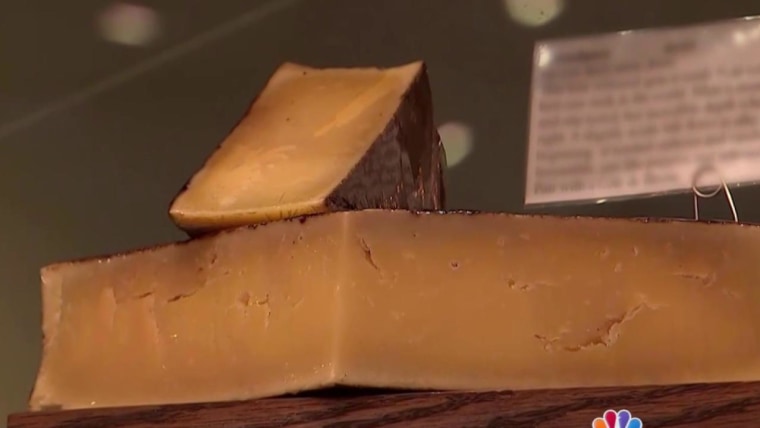What Color Is Mold on Parmesan Cheese
UPDATE: Today, Reuters reported that a judge in Illinois had simultaneously tossed out dozens of lawsuits from consumers suing food manufacturers and retailers alleging that "100% grated Parmesan cheese" labels were deceptive because packaged cheese often contains cellulose (made from wood pulp), because the ingredient is listed on the label.

According to a memorandum obtained by Consumerist, federal judge Gary Feinerman concluded that a "reasonable consumer" would "still suspect that something other than cheese might be in the container, and so would turn it around, enabling them to learn the truth from a quick skim of the ingredient label." In other words, it's the consumer's responsibility to read the label if they want the full picture.
If you'd still rather skip the plant fibers in your Parmesan cheese, you'll find tips on choosing cheese in the original story, below:
Bloomberg News recently reported that some packaged grated Parmesan cheeses contain too much of a plant fiber called cellulose, according to a test conducted by an independent laboratory.
The cellulose mentioned is a powdered plant fiber that's completely legal in the US and is an FDA approved anti-clumping ingredient for pre-grated cheese. Cellulose is widely used throughout the food industry, helping to make foods like ice cream have a creamier mouthfeel and it's used in good quality grated cheeses, as well as not-so-great quality cheeses.
Since not all cheese is created equal, we turned to Liz Thorpe, cheese expert, consultant and author of The Cheese Chronicles, to get her tips for how to make sure you get real Parmesan every time:
1. Look for the words "Parmigiano-Reggiano" on the rind.
"The first thing to know is that Italian Parmigiano-Reggiano and Amerian Parmesan cheese aren't the same thing," says Thorpe. "Parmigiano-Reggiano is a legally protected designation of origin that's used in Europe only for Italian cheese. The beauty of this cheese is that you can always know that you're getting the real thing because the name 'Parmigiano-Reggiano' is burned onto its rind in an unmistakable dotted pattern." This is the top of the line Italian cheese that you want to use in your cooking and and hope to see in restaurants.
2. Buy a wedge from a wheel of cheese rather than pre-grated cheese.
Many of us buy grated cheese for its convenience, but "it's super easy to use a microplane and then you're guaranteed a pure product," says Thorpe. "Grate or crumble it yourself—it will taste so much better and you'll use less cheese because it's flavor is so much better."
3. If you're going to buy pre-grated Parmesan, look for American producers with good reputations.
"Learn the names of reputable brands that offer pre-grated Parmesan like Sartori and BelGioioso which are both from Wisconsin and Arthur Schuman, Inc. from New Jersey which is the largest importer of hard Italian cheeses," says Thorpe. "Their products are widely available, their quality is really excellent and you can count on their cheeses."
4. In a supermarket, shop for Parmesan in the deli department first.
"There are three different tiers of quality: the Parmesan in the deli area, the Parmesan in the dairy case and the Parmesan in the aisle are each different," says Thorpe. "Shop in the deli department first, followed by the dairy case and, as a last resort, the aisle. Cheese is a perishable product and you want your cheese to require refrigeration. If you're buying one that is not refrigerated, there's a reason. A grated product that's shelf stable—that's the lowest product that you could be buying." In other words, make the cheese in a green can your last resort.
5. Buy grated cheese at a specialty foods shop.
"A small store buying whole wheels of cheese will grate it on site and there will not be any cellulose added because it doesn't need to have a four-, six- or eight-week shelf life," says Thorpe. Also, if you ask, a small retailer will likely be accommodating and grate the cheese for you.
This post was originally published on Feb. 18, 2016.
What Color Is Mold on Parmesan Cheese
Source: https://www.today.com/food/how-make-sure-you-re-getting-real-parmesan-cheese-t74191